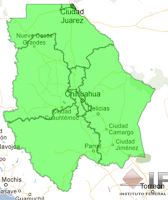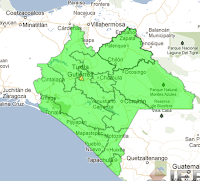Enrique Peña Nieto represents the new PRI, "It is Mexico's undisputed master of political marketing: young, handsome, successful" mentions the german newspaper Die Zeit in its portrait of the new Mexican president. In his acceptance speech, Peña Nieto asked Mexicans to forget political differences and to work together for the future of the country. The extremely mediatic event where he and his wife --- a beautiful soap opera actress that probably helped Peña win the hearts of sufficient Mexicans to beat his two main contestants --- thanked those who voted for the PRI and made a commitment to rule the country responsibly was also the place where I saw the following sentence: "Today Mexico won, Mexico has decided".
My immediate question was actually what Mexico chose him? Who actually helped Peña to beat his opponents? In one article it was reported that Peña was particularly popular in the social segments of women, the older than 30 and people from rural settings and particularly unpopular in the segments of young voters and those with more years of education, who actually voted more for AMLO.
I spent Sunday night following the PREP system that showed the counting of the votes as they arrived from the voting sections. Google built a real-time system that allowed not only to monitor the election results at the national and state level, but also gave the results at the district level. I was really surprised to see this google tool and even more interested in looking at the geographical patterns of the election.
The results show that electoral preferences are very different across the country. In the North -West and the Bajio where the PAN has always been strong, electors still preferred Josefina Vasquez Mota to be their first female president. In the North-East, the Pacific Coast and even in the extreme South and the Peninsula the PRI was favored. In the South of Mexico, from the capital to the southern states of Oaxaca, Tabasco and even Quintana Roo, Mexicans preferred to vote for the leftist candidate.
Today I stumbled on the following image on facebook and found it quite funny. The image uses part of the history from the Lord of the Rings fantastic realm created by Tolkien to show the important diversity in electoral preferences. Although the image was probably made by individuals who did not adhere to the PRI proposal and probably dislikes USA foreign politics in Mexico, I think it is quite creative. Perhaps the image, by comparing PRD winning states with Rohan and PAN winning states with Gondor , is hinting at the necessity of PRD and PAN followers to unite if they really want to oust the PRI from power. This will have to wait until 2018...
 In the meantime I wanted to show the differences of these 2012 elections from the 2006 presidential elections. At that time the PAN won the elections by a difference of only 0.5%. The country was clearly split in only two. A clear North-South divide that has clearly changed in the last elections. Beside the clear shift of the Northern states to favor the PRI there are some interesting changes to note. Chiapas did not favor the PRD and voted for the PRI, same thing in Campeche. Puebla a state that usually has been related to conservative trends voted to the left this time. Veracruz voted mainly for the PAN in these elections.
In the meantime I wanted to show the differences of these 2012 elections from the 2006 presidential elections. At that time the PAN won the elections by a difference of only 0.5%. The country was clearly split in only two. A clear North-South divide that has clearly changed in the last elections. Beside the clear shift of the Northern states to favor the PRI there are some interesting changes to note. Chiapas did not favor the PRD and voted for the PRI, same thing in Campeche. Puebla a state that usually has been related to conservative trends voted to the left this time. Veracruz voted mainly for the PAN in these elections.In a deeper analysis of geographical patterns of votes it is interesting to observe certain interesting facts.
1- In some states preferences were homogeneous.
a) PRI
 |
| Chihuahua |
 |
| Zacatecas |
 |
| Michoacan |
 |
| Nayarit |
 |
| Sinaloa |
 |
| Merida |
b) PRD
 |
| Tabasco |
 |
| Oaxaca |
 |
| Quintana Roo |
 |
| Distrito Federal - Southern Mexico City |
2- An Urban- Rural divide.
a) PAN in the cities, PRI in the rural areas
 |
| Coahuila |
 |
| Guanajuato |
 |
| Sonora |
 |
| Queretaro |
 |
| San Luis Potosi |
Although Queretaro, Coahuila, Sonora and San Luis Potosi showed dominance by the PRI, when you look into the details you can see that the big cities in these states actually voted for the PAN. Queretaro City, San Luis City, Hermosillo, Saltillo and Torreon actually voted for the PAN, it was their rural or and smaller city counterparts that actually changed the balance of the elections. In Guanajuato the pattern is similar, people in Leon, Celaya, Salamanca and San Miguel de Allende voted for the PAN and the rural parts of the state voted for the PRI. In this case the PAN won the state probably because there are more larger cities than in the other states of the center of the country.
b) PRD in the cities, PRI in the rural areas
 |
| Tijuana |
 |
| Puebla |
 |
| Chiapas |
In Chiapas, Puebla and Tijuana people in the major cities voted for the PRD. It is quite surprising to see that Tijuana City and Puebla City were actually for the left party. To my best understanding these cities had been supporting other parties in the past. Another big surprise was to see the state of Chiapas, the state with the highest proportion of indigenous populations and home to the Zapatista movement to vote for the PRI this time. Tuxtla Gutierrez, the capital of the city actually voted for the PRD. Again seeing the results in Oaxaca, Guerrero, Tabasco and Quintana Roo it is quite surprising that Chiapas voted for the PRI. I would really be interested to see what happened at the Section level.
3- Estado de Mexico - PRI domination except in the areas closest to the D.F.
 |
| Estado de Mexico - Northern Mexico City |
4- Guadalajara - a small drop of blue in a green ocean
 |
| Guadalajara |
Basically the population with the highest income stayed with the PAN and the rest voted for the PRI. This hints at another trend in voter preferences. Urban/Rural, Income, Historical preferences are some of the aspects we have observed until now.
5- Monterrey - Almost loyal to the PAN
 |
| Monterrey |
Monterrey, the third city in population size and the closest to the USA of the main cities in Mexico, remained loyal to the PAN.
There is one municipality in the urban are that voted for the PRI though. I am intrigued by this municipality where Peña got 40% of the votes whereas the PAN only got 29%.
The trend in the other municipalities was PAN 45% PRI 30%.
It would be interested to see what demographic characteristics explain this difference.
5- An interesting case of electoral diversity - Veracruz
In Veracruz you can actually see many of the differences we saw in other areas of the country. Rural areas voted for the PRI, a North South divide. Xalapa, a student city sometimes called the Mexican athens voted left. The Veracruz city port voted right and Cd. Madero and Tuxpan in the North voted PRI. The results in Veracruz would probably be the motive of a very interesting paper on electoral diversity in Mexico. I would really like to learn more about the reasons for the electoral diversity in this state.
To conclude with this post, it seems that the diversity in electoral preferences hints at a more mature democracy in Mexico. It also hints at the diversity in the population. I hope our new president Enrique Peña Nieto keeps this in mind in his next 6 years of ruling the country. I hope when he says Mexico won he doesn't believe that all of Mexico elected him... I hope he means this as the fact that Mexico won because we are truly entering a democratic era. I hope the old ways of the PRI are not used again, I hope repression, authoritarian rule and corruption will not come back with the PRI. Enrique Peña Nieto ,welcome to the presidency, we hope Mexico moves in the right direction with you... We really need it...



No hay comentarios:
Publicar un comentario